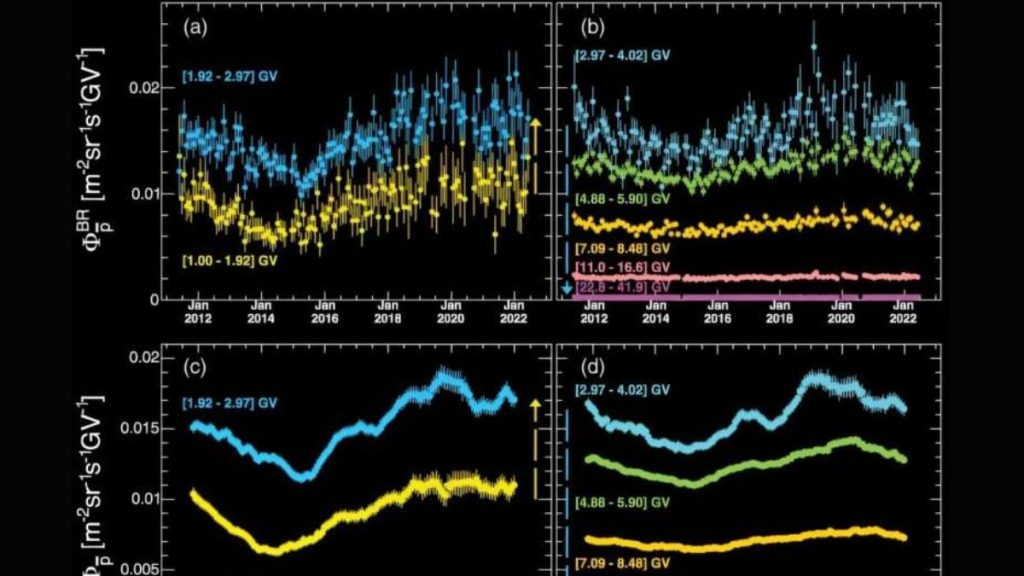AMS Data Reveals Charged Particle Variations in Heliosphere Over Solar Cycle

Variations in charged particles moving through the heliosphere over an 11-year solar cycle have been identified by researchers analysing data from the Alpha Magnetic Spectrometer (AMS) aboard the International Space Station. Shifts in the heliospheric magnetic field and their impact on particle movement have been examined, with trends observed in antiproton and cosmic nuclei fluxes. The findings are based on 11 years of data collected by the AMS, highlighting the influence of solar modulation on cosmic rays.
Charged Particle Behaviour in the Heliosphere
According to two research papers published in Physical Review Letters, fluctuations in the heliospheric magnetic field affect the movement and interaction of charged particles within the heliosphere. These particles originate from both the sun and galactic cosmic rays (GCRs) entering from beyond the solar system. The AMS has measured variations in mass and energy, revealing how these charged particles respond to solar activity.
Impact on Antiprotons and Cosmic Nuclei
The study identified trends in antiproton behaviour, showing changes in flux levels based on heliospheric conditions. Data indicate that antiproton fluxes exhibit notable temporal variations up to approximately 10 GV, with decreasing fluctuations at higher rigidity levels. Cosmic nuclei, including helium, lithium, beryllium, boron, nitrogen, carbon, and oxygen, were also analysed, showing similar patterns in flux variations. Correlations were established between changes in solar modulation and fluctuations in cosmic nuclei fluxes.
Long-Term Observations of Solar Modulation
The AMS data set spans more than a single solar cycle, providing an opportunity to study long-term variations. Changes in the heliospheric magnetic field have been observed to influence the behaviour of GCRs, affecting their energy levels and interactions. The study’s findings contribute to a deeper understanding of cosmic ray propagation and solar activity’s role in shaping the space environment.



